Sauerkraut is a new favourite at home these days. This is a food that has been around since the 4th century BC. Once you decide to include healthy options in the diet I believe you will find sauerkraut one of your favourite. In the Caribbean, sauerkraut or sour cabbage is not that popular, but this fermented dish is known in many cultures as a side dish. I find it a wonderfully cheap and tasty form of probiotics.
Sauerkraut is a German word, however, according to Wikipedia the dish itself did not originate in Germany. It is a popular dish in China, and from China many other countries included sour cabbage to their list of cuisines. Sauerkraut or sour cabbage is also called fermented cabbage in some countries. The main differences among the various countries would be what was fermented along with the cabbage. Some vegetables often pickled with the cabbage are carrots, beetroot, green pepper, even apples.
Fermenting Vegetables
Fermenting vegetables is common throughout the world as it is another way to preserve foods that provide needed sources of nutrients. Fermenting the cabbage increases the bio-nutritional value of it.
Fermentation is a chemical process where bacteria, yeasts, or other micro-organisms break down the sugar into a simpler substance, alcohol or an acid. It is the process whereby bear, wine, yogurt, or kimchi is made. The process of fermentation allows good bacteria to multiply and break down damaging substances (such as lectin) in the food.
As a side note, lectins are also referred to as antinutrients and it exists in plants as a natural defense and deterrent to animals that eat them. It is essentially a toxin. It is found in many plant and animal based foods. We cannot digest lectins. Consumption of large amounts of lectins can damage your gut and decreases the absorption of nutrients from the food in the gut. Thus foods that have high levels of lectin are best eaten when cooked, sprouted, or fermented.
Fermented cabbage is a good source of vitamins C and K. It is exceptionally low in calories but high in calcium and magnesium. It also contains iron, manganese, vitamin B6, copper, potassium, and fiber. Uncooked sauerkraut contains live lactobacilli and beneficial microbes. It is rich in digestive enzymes that can help you improve the health of your gut and promote the growth of good bacteria. Most of the benefits of fermented cabbage is lost during heating or pasteurization. Thus, store bought sauerkraut is not as highly nutritious as homemade sauerkraut.
Sauerkraut has been used throughout the years to improve health, prevent infections and inhibit diseases. The main benefit of sauerkraut on the gut is the main reason I make it so often now. Some people claim that they get bloated when they eat too much. However, this should be expected because probiotics are meant to feed the good bacteria and kill off the bad bacteria. Bad bacteria tend to cause excess bloating during their die out stages. Don’t overdo it when you are now beginning to eat sauerkraut.
The Sauerkraut Recipe
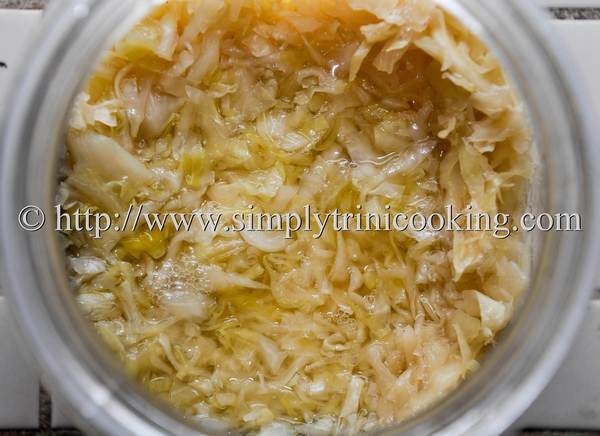
Sauerkraut can be prepared with white, red or green cabbage. It is very easy to prepare. You basically need only two ingredients: 1 large cabbage and some salt (make sure the cabbage is fresh). You can add other vegetables to your ferment if you like, but this recipe focuses on a basic sauerkraut recipe.

First, remove the top layers of the cabbage, clean and set aside. Next, thinly slice or shred the cabbage. Wash and drain under running water in a strainer and place in a deep bowl.
Then add 1-2 tablespoons of natural salt. I used pink salt, but you can also use sea salt. Do not use regular salt or iodized salt. Knead the salt and the cabbage together. The salt will draw the juice out of the cabbage and produce the lactic acid. The salt is also necessary to help stop the putrefactive microbes in the initial stages of the fermentation and kill the pathogens.
Continue kneading with your hands or use a wooden hand pestle to smash it until the juice comes out. You should eventually get enough juice that covers the shredded cabbage.
Next, pack the cabbage and the juice in a large glass jar or enameled bowl. I personally prefer glass jars. Fold the reserved cabbage leaves and place above the chopped cabbage.
Firmly press the leaves into the jar, making sure no air is trapped within. Make sure there is juice above the cabbage leaves. If necessary, you may have to add a little distilled water to make sure the leaves are submerged in the water.
No part of the cabbage should be exposed above the water as it could rot. I find it helpful to add the weight of a glass plate or glass jar that can fit into the jar to keep the leaves at least 1 cm below the water. Also make sure there is space between the cabbage and the lid (about 2 cm to 3 cm). You also want to just rest the lid on the jar so the fermentation gases can escape. DO NOT TIGHTEN THE LID!
Once the jar is covered and secured, place it in a dark dry place and covered with a towel. Fermentation should take 5-7 days. I like the sharp sour taste you get by day 7.
Saurekraut can be eaten raw. It has a wonderfully sour taste. I especially love the crunch of the cabbage. Place it in your soups, stews, salads, sandwiches, or serve it as a side dish. If you have not eaten it before, I suggest you try the juice a bit at a time and the cabbage in warm soups. You will certainly enjoy it. I find that the liquid from, experience thus far, helps improve dental health as well.
So, as you can see we have started posting recipes to promote proper health. Indeed I have found that as a nation though small we suffer from too much lifestyle diseases. Hopefully more people will realise the health benefits of these healthful recipes and ultimately derive it’s benefits.
More recipes to come….towards your better health.
Ah gone!
By the way, The Simply Trini Cooking Cookbook is now available at Amazon in Kindle and soft cover paperback copy. The cookbook contains over 600 recipes. Order your copy today!

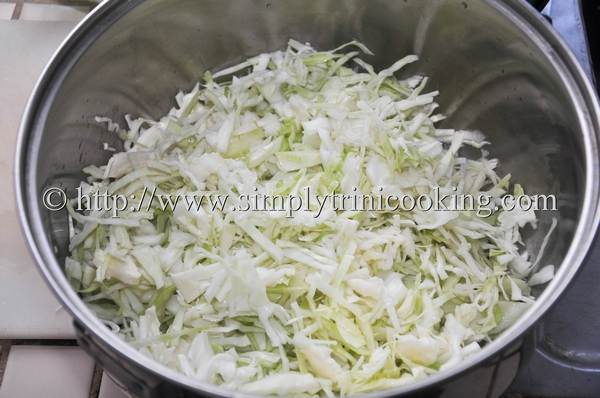
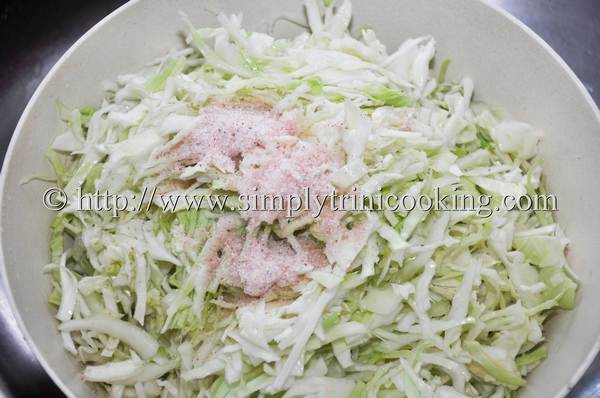
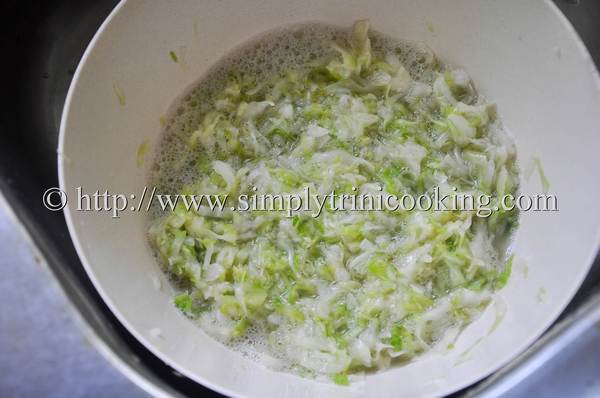

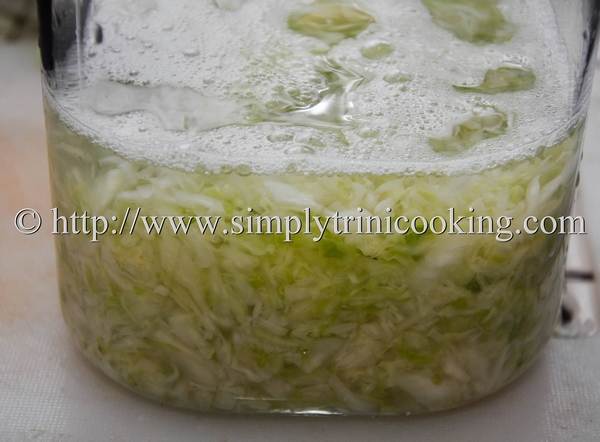
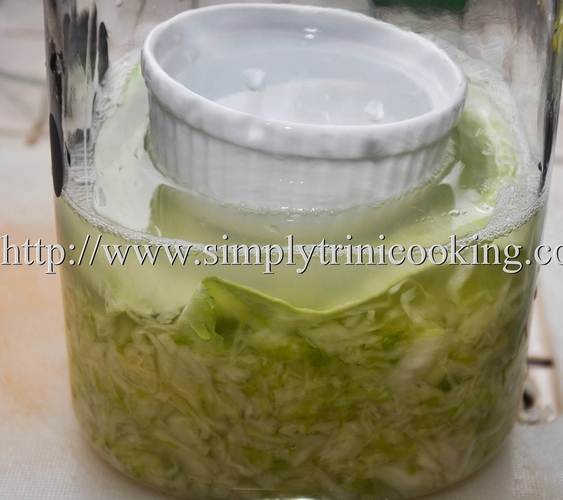
This was an interesting article about sauerkraut. My wife and I want to try new kinds of food. I’ll look for sauerkraut that we can try.